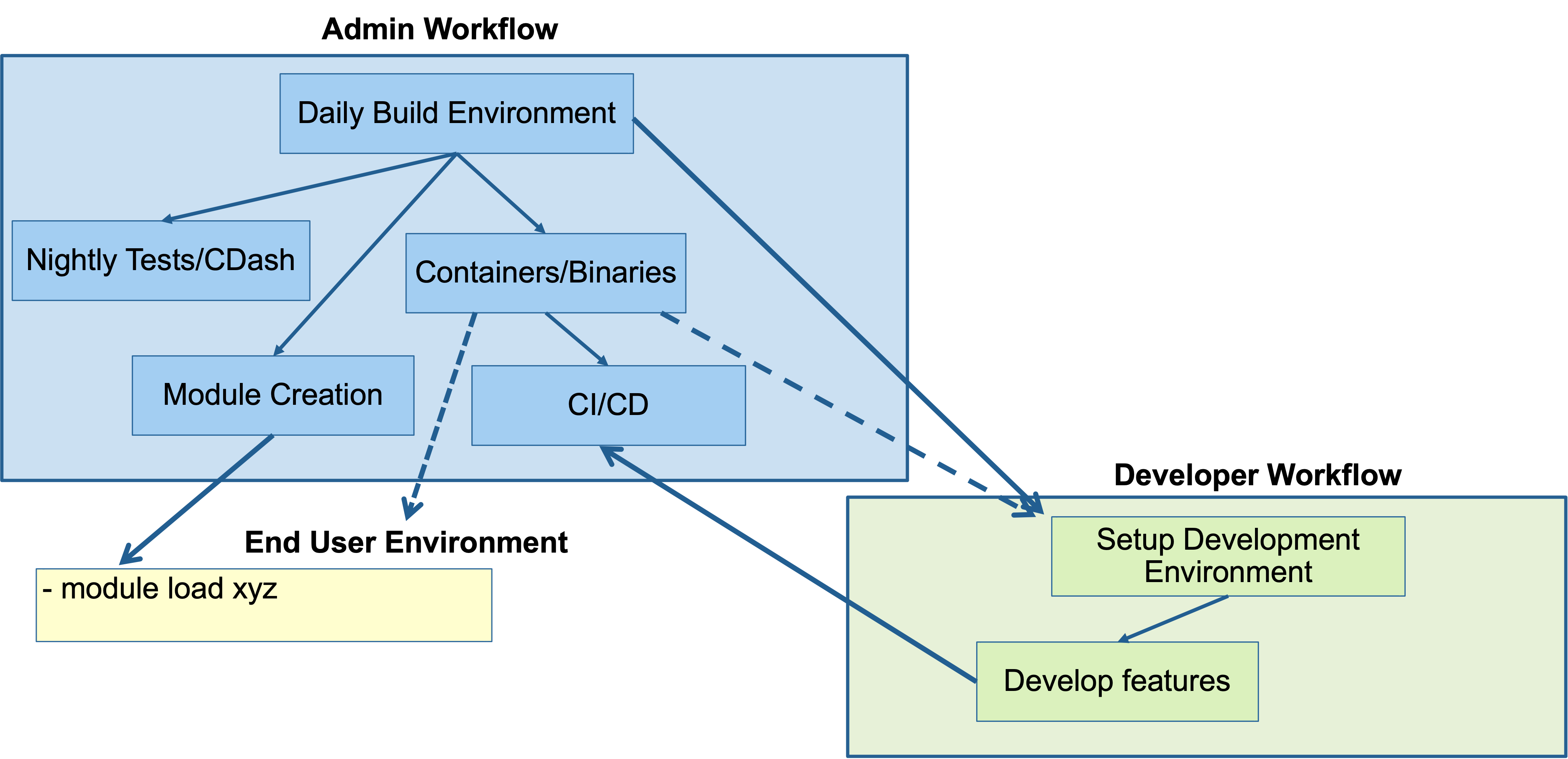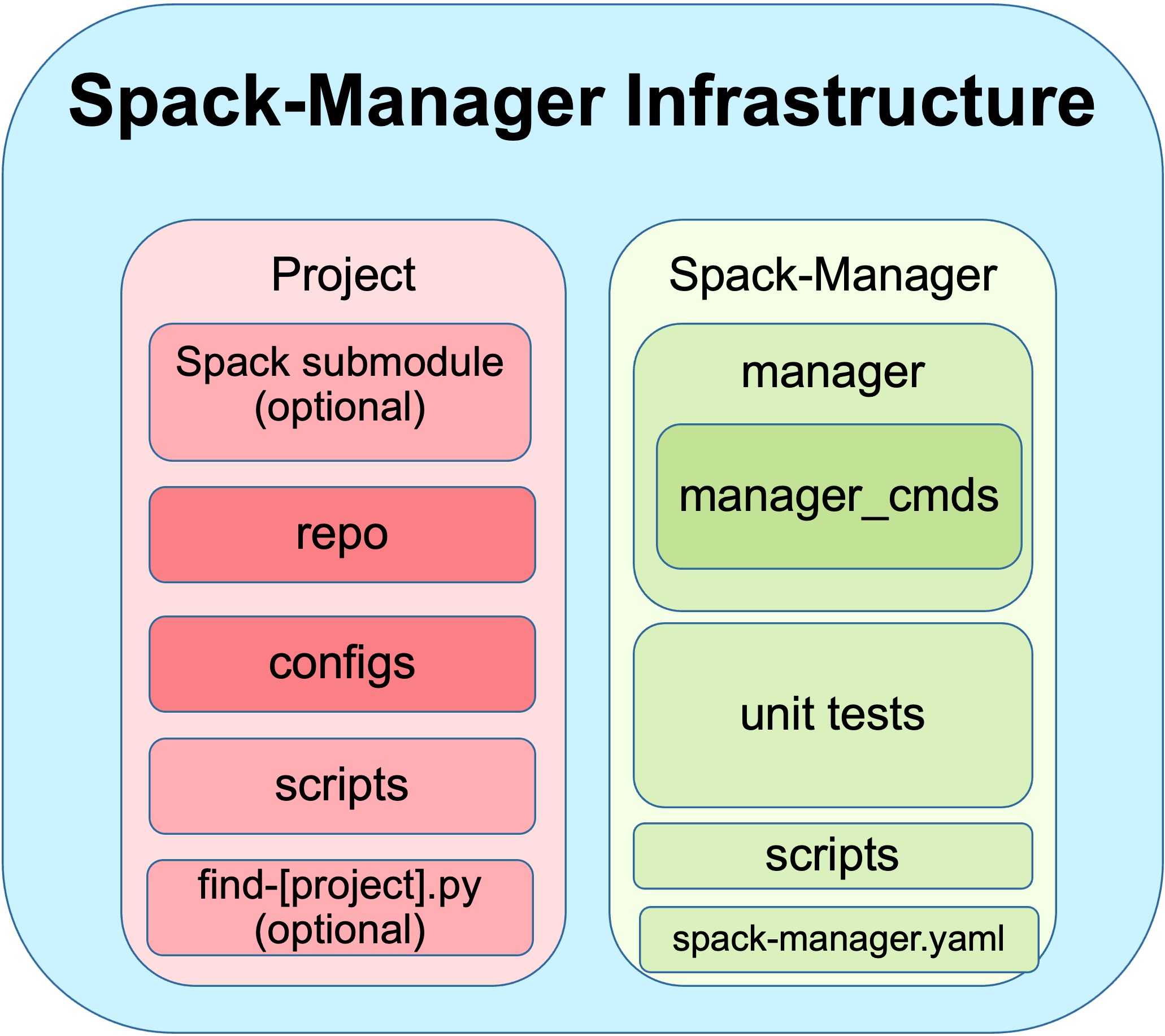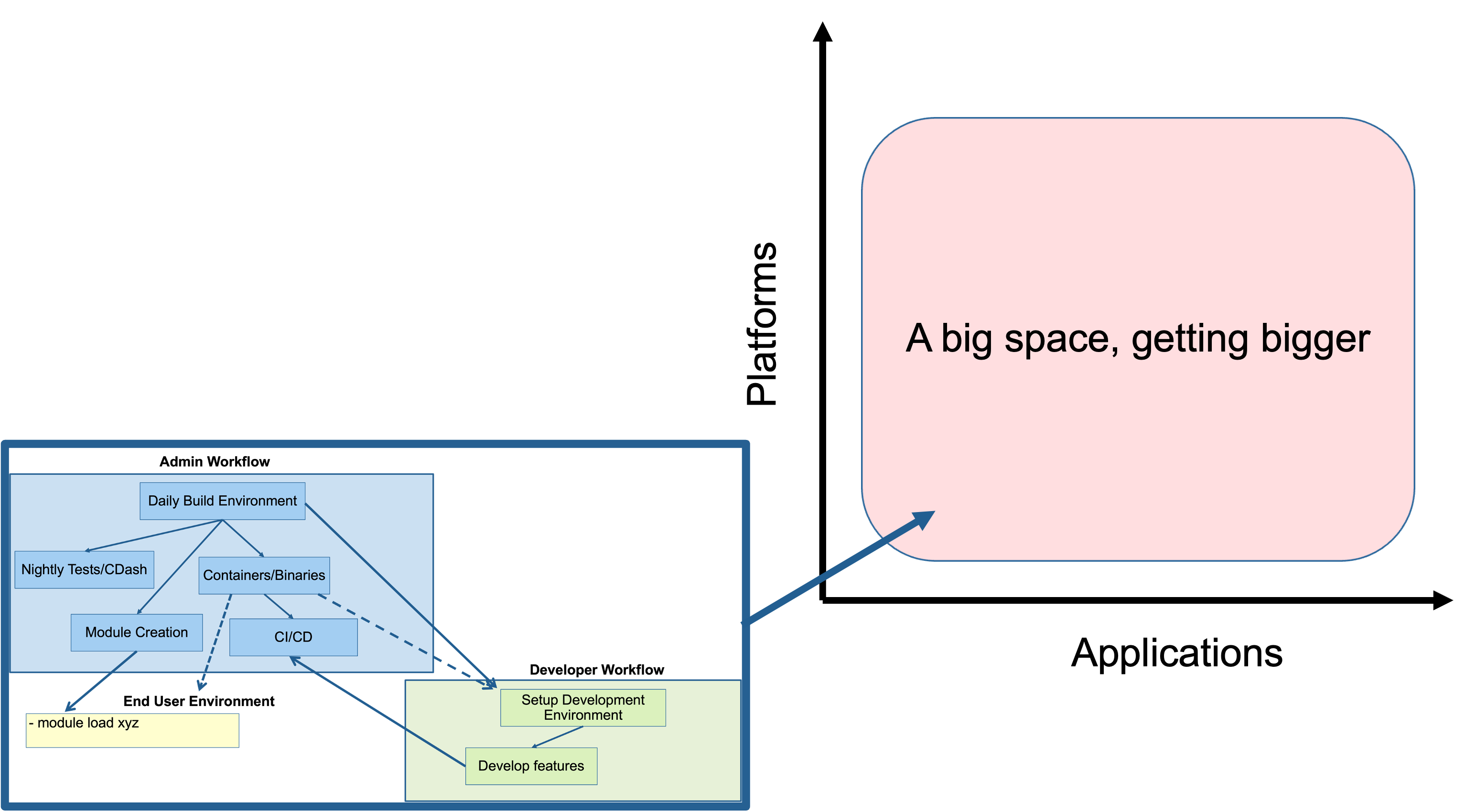Spack-Manager Structure
Spack-Manager is a Spack extension that provides a way for software applications to configure their usage of spack.

3 An example of generalized infrastructure requirements that are common across HPC and scientific computing applications. Spack-Manager’s goal is to empower these types of infrastructures while still allowing application teams to drive the details.
The code of Spack-Manager is independent of each individual application and each application code needs to configure a Spack-Manager Project to tell Spack-Manager how to work with their application.

4 Spack-Manager is designed to provide an abstraction that can support multiple application teams. Each team develops a Project that can be registered with an instance of Spack-Manager.
A Project at its core is simply a collection of spack configuration files and spack package repositories. A few other optional hooks will be discussed below.
The configuration files in a Project are organized based on the configuration bifurcations that the projects supports. These are called Machines based on the guiding principle that spack configurations typically have to be changed when the machine/system is changed.
Projects can be registered with Spack-Manager by adding them to the spack-manager.yaml configuration file. This file lives in the Spack-Manager directory and controls settings for Spack-Manager and the Projects that are registered.
spack-manager:
projects:
- /path/to/project_a
default_view: False
- $HOME/project_b
Information on configuring a new Project can be found in the system administrator profile documentation here.

5 The end goal of many code application and DevOps teams is to efficiently span the space of platform permutations and project variations.